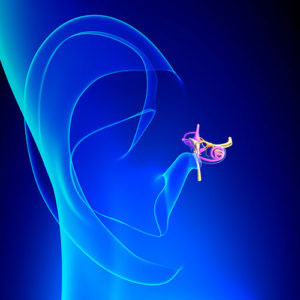CBSET / CILcare Partnership Supports “World Hearing Day 2019,” Sponsored by the World Health Organization (WHO) on March 3rd, to Make Hearing a Priority

1. Hearing loss is at epidemic prevalence.
According to the National Institutes of Health (NIH), about three out of every 1,000 children in the United States are born with a detectable level of hearing loss in one or both ears. One in eight Americans (30 million) age 12 years or older has hearing loss in both ears. Close to 38 million Americans age 18 and over report some trouble hearing. Worldwide, hearing loss afflicts 466 million people.
2. There are no approved drugs to treat hearing loss.
 “While there are, of course, therapeutics that effectively treat middle-ear infections, there are no drugs that treat the cochlea,” says Marie-Pierre Pasdelou, PharmD, Founder and Chief Development Officer of CILcare, a leading preclinical contract research organization dedicated to ear disorders.
“While there are, of course, therapeutics that effectively treat middle-ear infections, there are no drugs that treat the cochlea,” says Marie-Pierre Pasdelou, PharmD, Founder and Chief Development Officer of CILcare, a leading preclinical contract research organization dedicated to ear disorders.
“The cochlea is a complex sensory organ embedded in one of the most hardened bones of the body,” Dr. Pasdelou explains. “Noise-induced damage to the nearly 16,000 microscopic hair cells in the cochlea is the primary instigator of Noise-Induced Hearing Loss (NIHL). Delivering drugs to these challenging-to-access cochlear hair cells has been a considerable hindrance to hearing-loss drug development.”
3. Translational research is advancing potential solutions.
“Though great progress is being made toward understanding the genesis of hearing loss, translation of promising fresh approaches into human clinical trials has been sluggish,” explains Rami Tzafriri, PhD, Director of Research and Innovation for CBSET, a leading translational research CRO. “This reflects multifactorial challenges ranging from the need to identify the relevant target populations and safe and efficacious compounds, to the need to better understand and overcome the physiological barriers to inner-ear drug delivery, and the relative paucity of expert labs focusing on this disease.”
4. In vivo data is very encouraging.
 “While the challenge to develop safe and effective drugs that treat hearing loss continues to be formidable, it is not unconquerable,” adds Celia Belline, CILcare’s co-founder and CEO. “Indeed, impressive in vivo results are emboldening pharma companies not only to make investments in developing new treatments for hearing loss but also in supporting academia to translate the outcomes of their research into clinical benefits.”
“While the challenge to develop safe and effective drugs that treat hearing loss continues to be formidable, it is not unconquerable,” adds Celia Belline, CILcare’s co-founder and CEO. “Indeed, impressive in vivo results are emboldening pharma companies not only to make investments in developing new treatments for hearing loss but also in supporting academia to translate the outcomes of their research into clinical benefits.”
A good example of the scientific progress now being made in developing a safe and efficacious therapy for hearing loss is a study presented recently by CILcare at the 42nd Annual MidWinter Meeting of the Association for Research in Otolaryngology (ARO). CILcare scientists reported that the compound “GSK3077978A”, a CD38 inhibitor, delayed the aging process in an accelerated-senescence mouse model (“SAMP8”) and slowed down age-related hearing loss, protecting hearing functions. The results suggest that GSK3077978A’s target could be a potential pharmacological bull’s-eye for age-related hearing loss, which afflicts one in three persons 65 years and older. (CD38 is a protein-coding gene. SAMP8 [Senescence Accelerated Mouse-Prone 8] is a naturally occurring mouse line that displays a phenotype of accelerated aging.)
“Age-related hearing loss (ARHL) is the most rampant sensory disorder among elderly persons. We are very encouraged by our preclinical results that highlight the CD38 enzyme as a potential pharmacological target for thwarting AHRL,” says CILcare’s Chief Scientific Officer, Sylvie Pucheu, PhD.
“With GLP-compliant and AAALAC-accredited, state-of-the-art laboratories, along with novel expertise, the CBSET/CILcare partnership is strongly positioned to assist drug developers in generating preclinical safety studies as part of their regulatory application. Without a single marketed drug therapy to restore hearing loss, and an aging population, the need for therapies is dire and growing. The CBSET/CILcare collaboration is empowering us to contribute to the development of promising new drug therapies,” says Peter Markham, President and CEO, CBSET. “On this year’s World Hearing Day, there is certainly great cause for optimism.”

